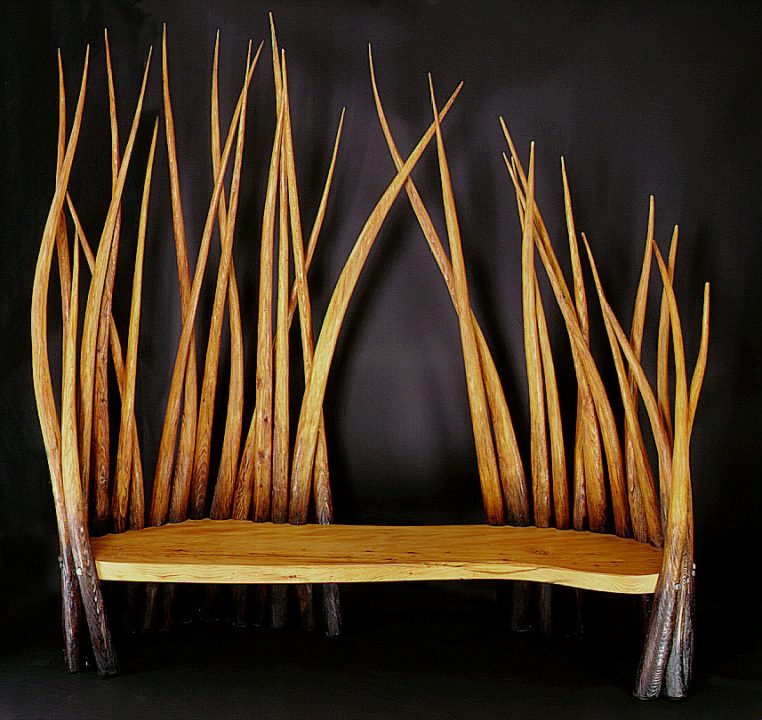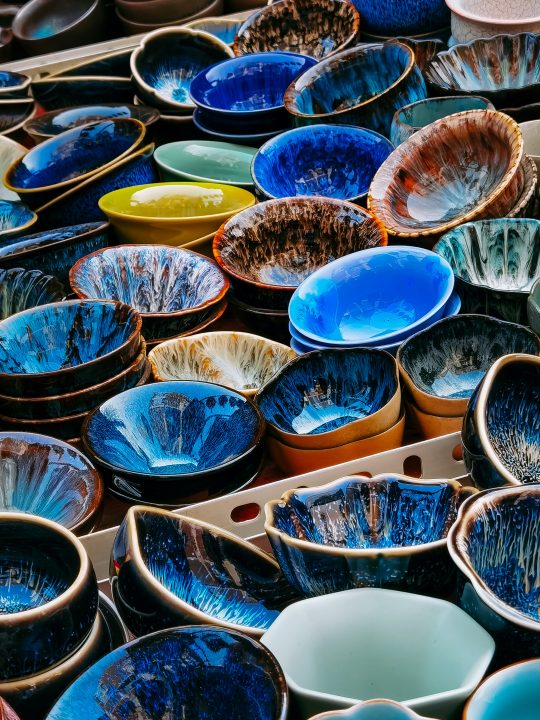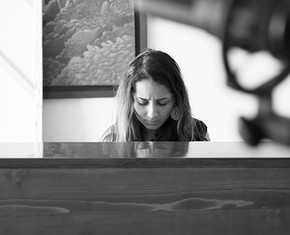The views expressed in our content reflect individual perspectives and do not represent the authoritative views of the Baha'i Faith.
Kahlil Gibran said “Work is love made visible.” As a craftsperson, I’ve tried to incorporate that spiritual ideal into what I make.
When I began in the early ‘70s, it wasn’t a good time to become a craftsperson: there were no apprenticeships or workshops making furniture, at least not in Oxfordshire, England, where I live. Making things with your hands was considered an anachronism in an industrial age.
Even the renowned design theorist and teacher Professor David Pye thought the crafts were in terminal decline in the late 1960s – and would only survive through the amateur who did things for love and not to make a livelihood.
RELATED: Nurturing My Soul Through Creative Collaboration

If the Crafts Survive
Looking back, it’s easy to see why traditional craft apprenticeships were in terminal decline – they were no longer fit for their historic purpose. Instead, they were modeled on rote learning, which required apprentices to be unquestioningly obedient to their master. At the same time, the widening of education challenged these didactic forms of learning.
But in the midst of all that a quiet revolution was going on; the crafts were being reinvented.
Eventually, the movement became officially known as the British Craft Revival. Fast forward to the present, and the crafts have enjoyed a worldwide reinvigoration. Today, in the UK for example, this revival has now become serious business; the Craft Industry is worth an estimated 3-4 billion British pounds per year.
I knew nothing of craft history and philosophy when I started, and still less about running a craft workshop enterprise. I had the vaguest knowledge of William Morris and John Ruskin, whose writings inspired the British Arts and Crafts Movement. But somehow, unknown to me, that legacy had penetrated my cultural DNA.
Very slowly a new type of craftsperson gradually emerged in the 20th century. It began with a few loners. They were really practical philosophers: architects, sculptors, graphic designers who wanted creative autonomy. In the USA Wharton Esherick (1887-1970), George Nakashima (1905-1990) and Sam Maloof (1916-2009), the first craftsperson to be awarded a MacArthur Fellowship, pioneered a new kind of independent craftsperson – one who designed and made their own furniture and collaborated with clients much like an artist might do. This new movement also happened elsewhere: James Krenoff (1920-2009) in Sweden and Edward Barnsley (1900-1987), Alan Peters (1933-2009) and John Makepeace (1939-) in the UK pioneered a similar model. They became the new masters to my generation of aspiring craftspeople; they were our role models.

This new movement happened in other crafts too. Bernard Leach, for example, the renowned British potter and a Baha’i, almost singlehandedly invented studio pottery following his training in Japan. These kinds of fine crafts and their philosophical underpinnings went back to the Arts and Crafts Movement in the UK, the Bauhaus in Germany, and the craft revival in the USA. So, when I began my creative search I discovered a rich cultural heritage; many of these craftspeople had written beautifully illustrated books on their work and philosophy. From my perspective as a Baha’i, a synchronicity exists between these visionary individuals and Baha’u’llah’s revelation.
A Baha’i Perspective on Arts and Crafts
Baha’u’llah, the prophet and founder of the Baha’i Faith, explained that each of God’s messengers infuses everything with new creative potentialities:
Through the mere revelation of the word “Fashioner” … such power is released as can generate, through successive ages, all the manifold arts which the hands of man can produce …. No sooner is this resplendent word uttered, then its animating energies, stirring within all created things, give birth to the means and instruments whereby such arts can be produced and perfected.
However, Baha’u’llah also pointed out that this energizing influence does not depend on individuals recognizing or following the latest messenger – but has a penetrating, transformative influence on receptive souls throughout all humanity:
All the wondrous achievements ye now witness are the direct consequences of the Revelation of this Name. In the days to come, ye will, verily, behold things of which ye have never heard before.
Becoming a Baha’i at 19 marked the beginning of my creative and spiritual journey. Gradually, the idea of being a furniture designer-maker crystallized in my mind. I didn’t think of myself as particularly artistic or practical, but Baha’u’llah’s teachings on the creative potential of the individual, the spiritual nature of work, and the role of art, crafts, and science in civilization building began to shape my thoughts and infuse my soul.
RELATED: How a Pencil and Some Paper Saved My Life – and My Soul
As a young man I felt particularly attracted to the idea that practicing a craft could be love made visible. I began to see making beautiful things as a form of spiritual practice, when the intention is pure hearted and the motivation for the betterment of the world. In search of answers to existential questions, Baha’u’llah’s teachings on arts and crafts offered me a radical new paradigm that went far beyond any anti-capitalist concept of work:
Arts, crafts and sciences uplift the world of being, and are conducive to its exaltation. Knowledge is as wings to man’s life, and a ladder for his ascent. Its acquisition is incumbent upon everyone. The knowledge of such sciences, however, should be acquired as can profit the peoples of the earth, and not those which begin with words and end with words. Great indeed is the claim of scientists and craftsmen on the peoples of the world.
The Baha’i teachings have provided a manifesto for the arts and crafts that is influencing and shaping our understanding of the creative process and the development of the many branches of the arts. This directly contrasts with the past, when in many societies, including the West, the craftsperson was considered unlearned and occupied one of the lowest rungs on the social ladder.

But Baha’is understand the role of the craftsperson as fundamental to civilization building – without the genius of the farmer and the craftsperson, humanity would not have made the transition from hunter-gatherers to village settlements. The West’s industrial revolution was predicated on the adaptation of craft skills and technology to industrial mass production. In Baha’u’llah’s teachings the role of the artist and craftsperson is central to the vision of a global civilization based on the oneness of humanity. Baha’u’llah invited each of us to play our part according to our talents and abilities in this global community-building process:
The source of crafts, sciences and arts is the power of reflection. Make ye every effort that out of this ideal mine there may gleam forth such pearls of wisdom and utterance as will promote the wellbeing and harmony of all the kindreds of the earth.
Back in 1974, at the age of 21, empowered by my new faith, idealistic, inexperienced, and with only limited skills, I started to look for an opportunity to learn my chosen craft. Having failed to find a workshop to train at, I decided to go to a College to study furniture design and technology. Educated beyond my competence, I spent my first year learning humility. I also realized that college was not the environment most conducive to learning a craft; I had to learn by doing, and on my own terms.
This was an epiphany.
To be truly creative we need to learn from the masters who have gone before us. As Twyla Tharpe, the renowned choreographer, said “Before you can think outside the box you have to make a box.” Now I had to find a way of learning my chosen craft. I had to put in my first 10,000 hours. I had already decided this was my life-long vocation. I had time.
















Comments
Sign in or create an account
Continue with Googleor